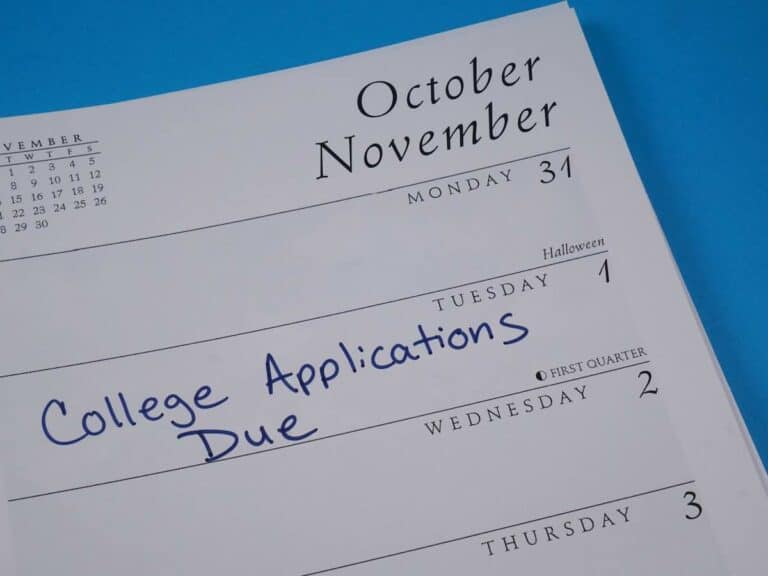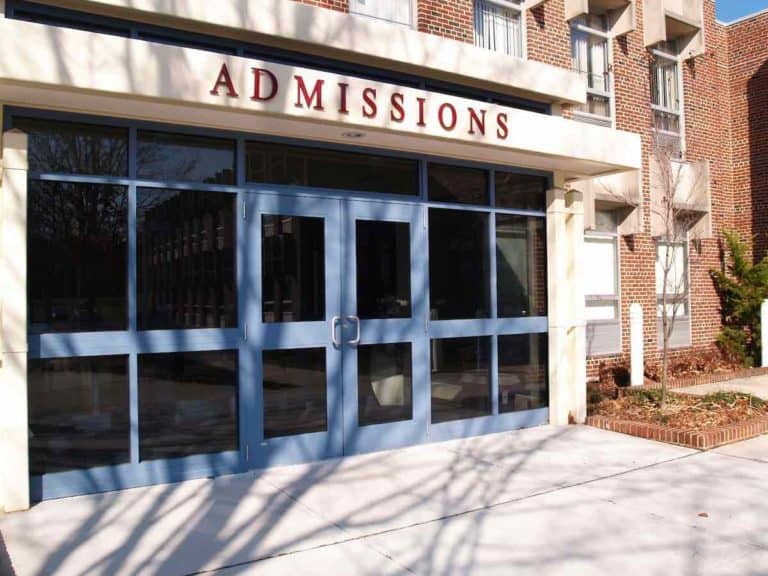What is Early Action College Admission Plan?
Early action is the best admission plan for a high schooler with a clear top-choice school and who is willing to withdraw his or her applications to other institutions if admitted.
Institutions offering EA are some of the most selective in the United States, although some may call theirs a little differently. Some examples of those schools include Harvard University, Princeton University, Stanford University, California Institute of Technology and the Massachusetts Institute of Technology.
Thinking about applying by November 1, which is the usual EA deadline? Read on!
In this post, just about everything you need to know about EA and applying via this early admission plan will be discussed, thus allowing you to learn if it’s the best for an incoming freshman college student like you.
What is Early Action?
Early action is an admission plan that only a few colleges in the nation offer. It has an earlier deadline like early decision, but it’s non-binding like regular decision. EA can take on another form: restrictive early action. REA is not offered by most colleges and universities, and it has some restrictions that traditional EA has none.
Is Early Action Binding?
Early action is non-binding, which means that students who receive an offer to attend are not obligated to matriculate. EA is similar to early decision in that they are both early admission plans that allow college-bound teens to receive decision notifications earlier, although ED is binding, while EA is non-binding.
As a result of it being non-binding, students accepted via EA may compare financial aid offers before choosing.
How Many Schools Can You Apply Early Action?
Students can apply early action to as many colleges and universities as they like. As a matter of fact, they may apply EA after applying early decision to a college. Students who get accepted via ED must withdraw their EA applications to other institutions since ED is binding. On the other hand, those who get accepted EA need not withdraw the rest of their EA applications.
In some instances, you can apply EA to only a single college — we will discuss this matter shortly, so keep reading.
When Do Early Action Decisions Come Out?
Most early action decisions come out in mid-December. However, at some postsecondary institutions, EA decisions come out anywhere from January to February. Decision notifications for early decision, meanwhile, usually come out in mid-December to late January, depending on the institution of higher education.
No matter when EA decisions come out, students admitted via the said admission plan have until May 1 to decide.
Does Early Action Increase Chances of Admission?
Early action increases a student’s chances of getting admitted. For instance, according to a 2023 report by US News, EA acceptance rate at Grinnell College was 51%, while regular decision acceptance rate was only 11%. On the other hand, at the University of Miami, EA acceptance rate was 57%, while, RD acceptance rate was only 11%.
Data says that colleges offering EA, on average, accepted 73% of EA applicants vs. 64% of regular decision applicants.
Is Early Action More Competitive?
Early action is more competitive than regular decision. That’s because most high-performing high school students preparing for their college careers tend to apply earlier than everybody else. So, in other words, EA applicants must be ready to compete with competitive applicants to enjoy increased chances of getting in via the early admission plan.
Compared to early decision, however, EA is less competitive — but is still more competitive than RD.
Can You Get Deferred From Early Action?
Students who apply early action can get deferred, which means that their applications will be reviewed by college admissions officers at a later date, usually during the regular decision round. A deferral is not a rejection but more like a second chance. From it, however, college applicants can be accepted or waitlisted or rejected.
Generally speaking, your chances of getting in after a deferral are low, especially if you applied to a competitive school.
Can You Get Rejected From Early Action?
Students who apply early action can get rejected. There are 3 possible outcomes of applying EA: acceptance, deferral and rejection. It goes without saying that getting deferred is better than getting rejected given that the EA applicant is provided with another chance at getting accepted. Of course, getting accepted EA is better than getting deferred and rejected.
Got rejected by your top-choice college during the EA round? You may not apply to it regular decision in the same year.
Is Early Action Worth It?
Early action is worth it for college-bound high schoolers who are sure as to which colleges they want to go to. Since EA is a non-binding early admission plan, accepted students are not obligated to enroll. Applying EA also comes with benefits such as increased admissions chances and lower stress during the remaining months of high school.
Applying EA, unfortunately, robs you of the opportunity to raise your GPA and test scores before applying to colleges.
What is Restrictive Early Action?
Restrictive early action is similar to early action in that it’s also a non-binding early admission plan. Similarly, high school students who apply REA may be accepted, deferred or rejected by colleges. The presence of the word “restrictive” in its name, however, makes it obvious that there are certain restrictions that come with applying REA.
Here are some of the most important things you need to know about applying to a college REA:
- You may not apply to any private institution via any early admission plan
- You may not apply to any public institution via early decision
- You may apply to private and public institutions via regular decision
- You may apply ED2 if deferred or rejected via REA
Only very few colleges and universities in the US offer REA, and most of them are highly selective schools like:
- Georgetown University
- Harvard University
- Princeton University
- Stanford University
- University of Notre Dame
- Yale University
What is Single-Choice Early Action?
Single-choice early action is just another name for restrictive early action, which means that they share the same policies. So, in other words, the same restrictions apply whether you are applying single-choice early action or REA.
Early Action vs. Other Admission Plans
Institutions of higher education that offer early action, of course, also offer regular decision to provide those who cannot or do not want to apply early a chance to apply, too. Some of these schools may also offer other early admission plans such as another EA round or early decision, which can come in a couple of rounds at certain colleges.
In this part of the post, we will compare EA with other admission plans high schoolers may choose from.
Difference Between Early Action and Early Decision
Early action and early decision are both early admission plans. Similarly, they allow applicants to know the decision of admissions officers earlier than the rest, even before they have the chance to apply regular decision. However, ED is binding, which means that accepted students will have to enroll. EA, on the other hand, is a non-binding early admission plan.
Can You Apply Early Decision and Early Action?
College-bound teens who wish to apply to their top-choice schools may apply both early decision and early action, of course to different institutions. Those who get admitted via ED, however, must withdraw their ED and EA applications elsewhere given that ED is a binding early admission plan that obligates accepted students to attend.
Early Action vs. Regular Decision
Early action has much earlier application deadlines and decision notifications than regular decision — ED deadlines are usually from January to February, while ED decisions typically come out late in March and even sometime in April. Students who get deferred during the EA round have another chance at getting accepted during the RD round.
Should I Apply Early Action or Regular Decision?
High school students should apply early if they have a clear top-choice school and they are happy with their GPAs and test scores. On the other hand, it’s a much better idea for them to apply regular decision if they need more time to improve their applications as well as to decide which particular school they want to attend if given an offer to matriculate.
Can You Apply Regular Decision After Early Action?
Students can apply regular decision after applying early action. This is true whether they are accepted or deferred during the EA round. However, they may not apply RD to the college to which they applied EA given that any individual can apply to a particular college only once per admissions cycle — he or she may reapply the following year.
Rolling Admission vs. Early Action
Rolling admission is an admission plan where colleges and universities offering them continually review applications as they come and release admission decisions as they are made. RA has a long admission window and applicants do not have to meet a hard deadline. Early action, on the other hand, is an admission plan with a hard deadline earlier than regular decision.
Which Colleges Have Early Action?
The following are some of the most highly-ranked early action colleges and universities and their EA deadlines:
| Institution | EA Deadline |
| California Institute of Technology | 1-Nov |
| Georgetown University | 1-Nov |
| Harvard University | 1-Nov |
| Massachusetts Institute of Technology | 1-Nov |
| Princeton University | 1-Nov |
| Stanford University | 1-Nov |
| University of Chicago | 1-Nov |
| University of Illinois Urbana-Champaign | 1-Nov |
| University of Michigan – Ann Arbor | 1-Nov |
| University of North Carolina at Chapel Hill | 15-Oct |
| University of Notre Dame | 1-Nov |
| University of Southern California | 1-Nov |
| University of Texas at Austin | 1-Nov |
| University of Virginia | 1-Nov |
| Yale University | 1-Nov |
How to Use Early Action to Get Into Your Dream College
The dream colleges of most high schoolers are selective ones, which admit only a small percentage of all applicants per admission cycle. By applying early action, if such an early admission plan is available, you can increase your likelihood of receiving an acceptance letter from your top-choice school as EA comes with increased admissions chances.
However, applying EA alone is not enough for you to get into that competitive school.
It’s also a must that you have a strong application given that the vast majority of high school teens who apply early, whether via EA or early decision, are at or near the top of their class.
Disclaimer: The views and opinions expressed in this article are those of the authors and do not necessarily represent those of the College Reality Check.





